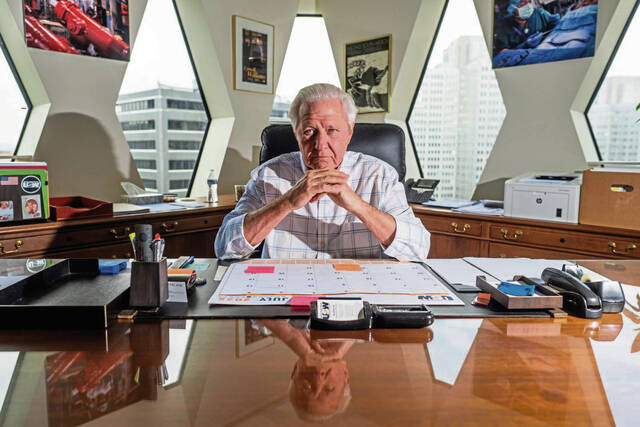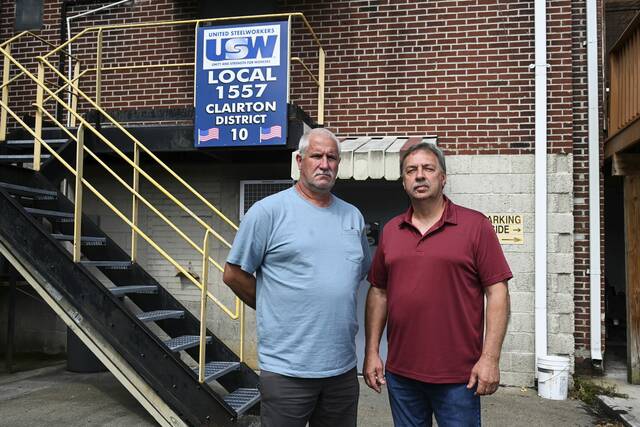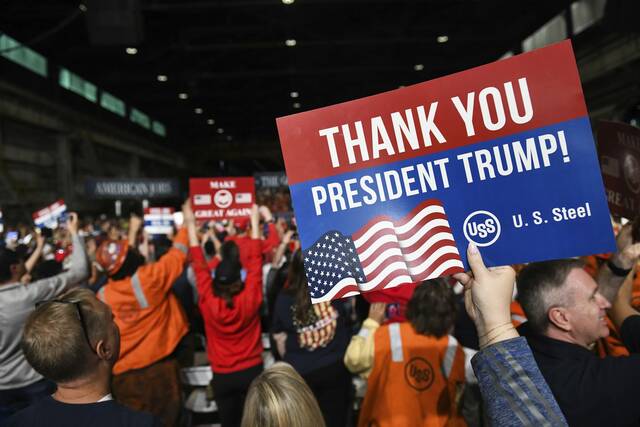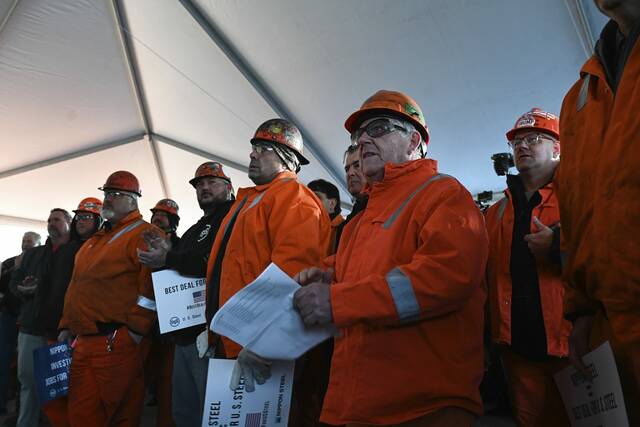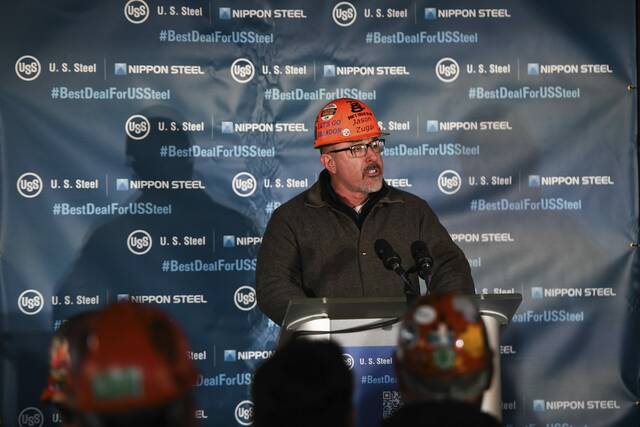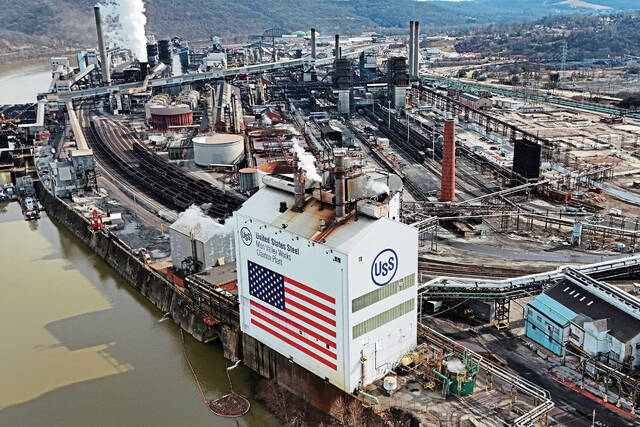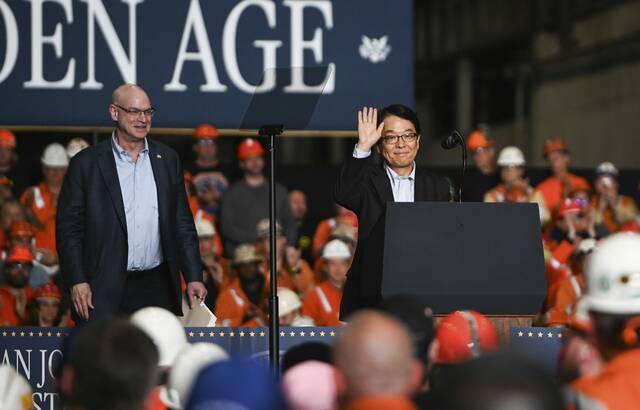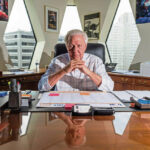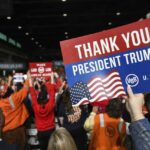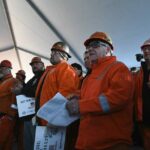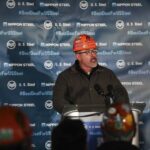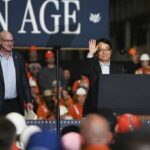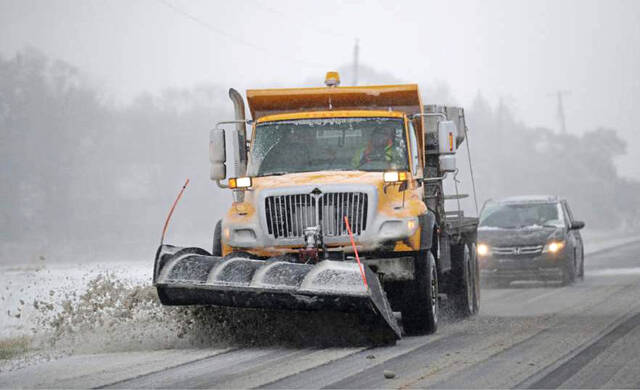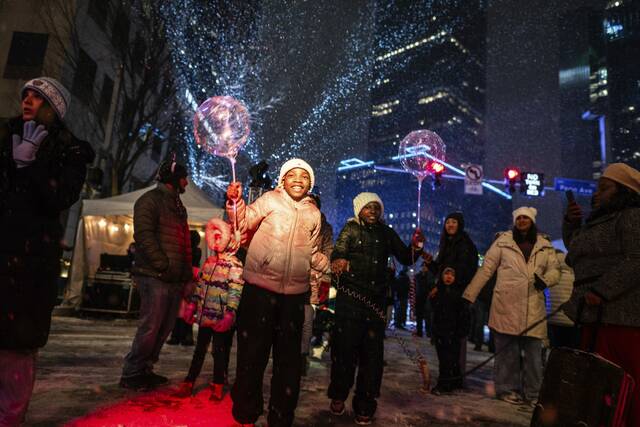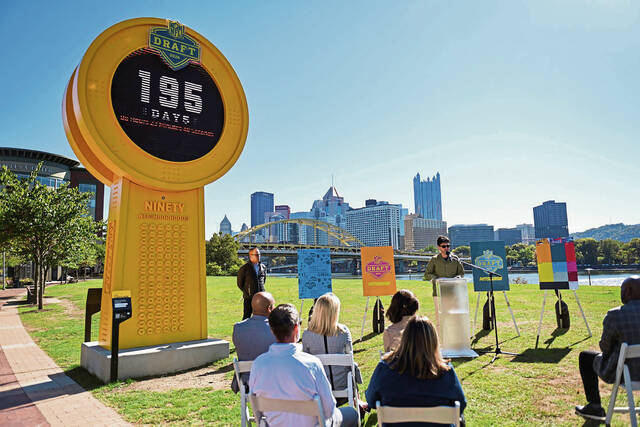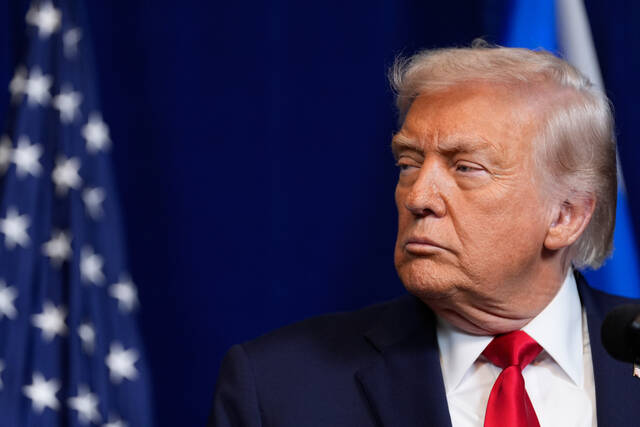Brian Pavlack leads something of a rebel faction within the United Steelworkers union.
Steelworkers for Trump, started by Pavlack ahead of the November election, gave voice to a growing number of defectors from the union’s traditional Democratic identity. The group mostly lives through Facebook, where it’s some 2,600 accounts strong, but a handful of core members earned minor celebrity in conservative circles.
Pavlack’s politics had shifted during his 25 years toiling at Clairton Coke Works. Like others in his union, he said he voted twice for Barack Obama, then three times for Donald Trump, believing the latter was the only candidate who would protect the steel industry.
Once Trump recaptured the White House, Pavlack trained his group on a new maverick cause. In defiance of union leadership, he threw its support behind the attempt by Nippon Steel, Japan’s largest steelmaker, to buy the Pittsburgh-based manufacturer for nearly $15 billion.
Pavlack, 51, of Elizabeth Township and a few of his buddies weren’t always sold on the sale.
But once promises of major investments by Nippon swayed them, they started promoting it at rallies and in regular appearances on Fox News.
Without a $2.4 billion infusion into the Mon Valley Works pledged by Nippon, they feared, U.S. Steel would ditch the antiquated facilities and shift more production to state-of-the-art nonunion plants in the South. Catastrophe for the Mon Valley wasn’t far-fetched: U.S. Steel CEO David Burritt warned as much in a September Wall Street Journal story.
Pavlack’s advocacy for the deal incensed co-workers like Bill Farrier, president of the local in Clairton, who fell in line with union leadership. Farrier was convinced the takeover would spell doom for the Mon Valley Works, a historic — and outdated — operation spanning three main facilities and capable of producing 2.9 millions tons of steel a year.
“There’s no solidarity with these guys,” Farrier said recently while clutching a cup of coffee in the union hall. A maintenance worker for 30 years, he experienced a similar political transformation as Pavlack — but never came around to Nippon.
Pavlack and Farrier are at the extreme ends of opposing factions within one of the nation’s largest unions as it navigates internal conflict and new ownership of U.S. Steel, with a critical task ahead: forging a new contract.
The next chapter of the Mon Valley Works depends on how the United Steelworkers binds together its members to tackle talks with U.S. Steel. Its success — or failure — has massive implications for more than 3,000 workers, their families and the struggling communities dependent on the plants for tax dollars.
Moving past this internal schism won’t be easy, and the union isn’t likely to receive any favors from a presidential administration that critics say routinely seeks to divide and weaken organized labor.
But if any union can hammer out a contract and create a productive relationship with Nippon, experts say, it’s the United Steelworkers. The union, with 850,000 active and retired employees, is regarded as one of the best run and most resilient in the nation, even enduring the steel industry apocalypse of the 1980s.
“They face a lot of challenges, but they’ve been probably the most successful union over the last 50 years of dealing with the challenges the labor movement has gone through,” said Paul Clark, a professor of labor and employment relations at Penn State University.
One challenge faced by everyone involved in the deal — the companies, the workers and the union — was just how long it remained in limbo.
The deal, which needed presidential approval, attracted a formidable list of skeptics in Washington, D.C., after it went public in December 2023: then-President Joe Biden, soon-to-be President Trump, Pennsylvania Democratic U.S. Sen. John Fetterman and others. They mostly cited national security concerns over a foreign firm taking control of a key domestic steelmaker, leading Biden to block the deal in January.
But workers of all persuasions had worries much closer to home: paying the bills, putting food on the table and preserving the dignity of a job that, for many, runs in the family.
“You could see the writing on the wall if we didn’t do this: The jobs are gone,” said Jason Zugai, a third-generation U.S. Steel employee and vice president of Local 2227 in West Mifflin.
Trump officially gave Nippon the green light in June, reversing Biden — and flip-flopping his own initial opposition.
Now the deal is done, as are the daily headlines.
But it’s not all water under the bridge for workers who clashed over the future of their company.
Speaking their minds
Local union leaders who like the deal claim they’re in the majority. So do those against it. Some in the rank and file seem not to feel strongly one way or another, like Irvin Works warehouse employee Rich Grogan, who said he was just rooting for “whatever happens that we can keep our jobs.”
Discord bred resentment, which lingers today.
Don Jackson, vice president of Local 1219, harbors frustration over a meeting a couple of months ago between workers from his plant and U.S. Sen. Dave McCormick of Pittsburgh. He believes the Republican senator’s interaction with pro-deal “imposters” made it seem the sale had the local’s approval.
“The ones that were actually elected officials from Local 1219 were not told about that meeting, were not contacted about that meeting, were not invited to that meeting in any way, shape or form,” Jackson said.
McCormick did not respond to requests for comment.
Several steelworkers also cited irritation with colleagues who went beyond private meetings to break publicly with union leadership.
Zugai, 48, of West Newton was one of the most talkative supporters of a Nippon takeover. Along with Local 2227 President Jack Maskil, he met with politicians, joined a panel discussion in Washington, D.C., and spoke his mind at multiple rallies over the course of a year or so.
“I didn’t want to cause any waves,” Zugai said. “But then I realized if I didn’t do it, who was going to do it?”
Farrier is left wondering why the international failed to issue some kind of rebuke or sanction.
“The union should have come down on them,” Farrier said. “And they didn’t.”
But United Steelworkers International President David McCall believed that wasn’t his place, even as he argued Nippon has a history of trade law violations and could easily rip up its promises to workers.
“Some of them didn’t want to promote some of the concerns we had,” McCall told TribLive. “That’s fine. Local union leaders get elected to represent their members.”
There’s value to this approach, according to Clark, the Penn State professor. If McCall were to rule with an iron fist, it might have jeopardized the union’s democratic culture and made it harder to reunite when the dust settled on the deal.
“Leadership could go after these people and put their locals in trusteeship, but I absolutely don’t think that would even get much consideration,” Clark said. “So they have to listen and try to put those differences aside, figure out where they agree and try to heal the scars.”
In times of internal division, unions should get back to basics, said Kate Bronfenbrenner, director of labor education research at Cornell University’s School of Industrial and Labor Relations.
“You have to find the issues that workers have in common,” Bronfenbrenner said. “And you have to start having fights on those common issues and winning on them and building back a united union.
“The bond that they have is greater than the divisions that they have.”
To rally or not
Some workers think McCall and other top brass could have done more to torpedo the deal.
The union couldn’t block the transaction unilaterally, but it was free to drum up criticism.
The companies were busy working through talking points with folks like Pavlack, staging rallies and even appealing to the general public with a “best deal for American steel” advertising campaign.
“We consistently share information with our employees that is important to their jobs and future,” said Amanda Malkowski, a U.S. Steel spokesperson. “From the early days of talks about a potential partnership with Nippon Steel, we’ve communicated openly and often with all employees. And we’ll keep doing so as we move forward together.”
The union mostly relied on internal communications, including 50 or so text messages to members, and press releases. Flyers were also passed out in the mills, and union staff were prepared with details of the deal, but it hardly displayed the muscle to keep pace with a couple of multibillion-dollar companies.
It read as passivity to some, like the union couldn’t back its fiery statements with action.
“The international should have been more proactive,” Farrier said. “For every rally they had, we should have had equal rallies, if not more.”
Rallies might have helped, McCall said, but he’s not sure how workers would have responded to such a heavy-handed measure.
“Our members, at the end of the day, they care about their jobs, they care about their families,” McCall said. “I think somebody probably wants to go to a Little League game before they come to a rally about why they ought to be anti-Nippon.”
Union leaders are elected by their members. Much like politicians, they must push their priorities without alienating their base. If Pavlack is to be believed, “a majority of steelworkers don’t trust McCall” because he failed in that regard.
U.S. Steel workers make up only about 1% of the union. But McCall’s very public defeat on the deal could be tough to ignore for the wider membership during an election this fall for union president.
“We have a track record of being able to deliver,” McCall said. “So they’ll either stand with us … or they’ll find other leadership.”
A new deal
At union halls and between shifts, U.S. Steel workers told TribLive they’re nervous about upcoming contract talks.
For all their differences, Pavlack and Farrier described their feelings the same way: “Worried.”
Negotiations won’t be radically different from the past.
U.S. Steel, not Nippon, will be sitting across the table. In fact, the company’s bargaining team will be identical to the last time, in 2022, according to U.S. Steel’s Malkowski. Those talks resulted in a four-year deal union leaders touted as boosting wages by more than 20%, improving health care and expanding time off.
But there are plenty of unknowns, like how the sale’s peculiar conditions might warp negotiations.
National security concerns over the deal resulted in the federal government getting a “golden share” that can block Nippon from reneging on $11 billion in pledged capital investment across all U.S. Steel facilities, closing plants, cutting wages and more.
Trump holds the power until the end of his term, at which point it transfers to the Treasury and Commerce departments.
The golden share could be a useful backstop against disaster for the union, noted Michelle Kaminski, a professor in Michigan State University’s School of Human Resources and Labor Relations, but the federal government is not obligated to use it.
“It all depends on who the president is and their policies,” Kaminski said. “If I were the union, I would try to view that golden share thing as a last resort, but still try to negotiate to build workers’ power within the company.”
Meetings between international and local leadership to sketch out contract demands will start around the turn of the year, according to McCall, followed by negotiations next summer. The existing contract expires in September 2026.
For all the bad blood between Nippon and the United Steelworkers, the two will likely try to build a productive relationship, in the view of John Stember, a labor attorney in Pittsburgh.
“They all have to learn to live with each other,” Stember said.


